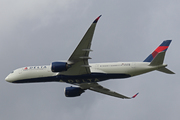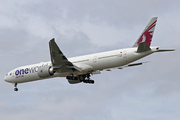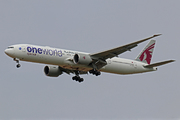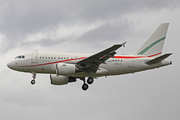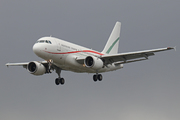Dépêches
CSSI Supports FAA in Reaching 15,000 GMU Flights for RVSM Program
Dépèche transmise le 1 mars 2012 par Business Wire

CSSI Supports FAA in Reaching 15,000 GMU Flights for RVSM Program
WASHINGTON--(BUSINESS WIRE)--The FAA William J. Hughes Technical Center’s (WJHTC) Separation Standards Analysis Branch (ANG-E61) recently recorded its 15,000th GPS Monitoring unit (GMU) flight for the Reduced Vertical Separation Minimum (RVSM) Program.
CSSI, a technical and engineering services company headquartered here, is very proud of its contributions supporting this important program, both to the RVSM monitoring program and to the design of the Enhanced GPS Monitoring Unit (EGMU) used in support of the program.
The first GMU flight occurred on August 26, 1996 as a test onboard a US Airways flight from Paris to Philadelphia. Since that first flight, operators around the globe have been monitored using the original GMU as well as the enhanced version EGMU that CSSI helped to develop in 2003.
CSSI has had the privilege to work on the RVSM monitoring program since July 1999, and has supported over 7,000 monitoring flights worldwide.
RVSM is defined as the reduction of minimum vertical spacing from 2,000 to 1,000 feet between aircraft at flight levels from 29,000 feet up to 41,000 feet. RVSM was implemented as a means to increase airspace capacity in optimum fuel-saving flight levels. The International Civil Aviation Organization (ICAO) and its member States first mandated the implementation of RVSM in the North Atlantic in March 1997; other regions around the world followed. The US implemented RVSM domestically in January 2005. RVSM has now been implemented globally and requires that aircraft operating between flight levels 290 and 410 (inclusive) be RVSM approved. Monitoring an aircraft’s height-keeping performance is an important part of the RVSM approval process. Monitoring supports the safety assessment and safety oversight function that is required with RVSM implementation. An operator must meet the minimum monitoring requirements established by its state authority to maintain their RVSM approval status. The WJHTC’s EGMU is a key component of this process.
In May 2011, ICAO member States implemented a long-term RVSM monitoring policy requiring that aircraft operating within RVSM airspace complete a recurring monitoring flight in order to maintain their RVSM approval status. Operators must complete an RVSM monitoring flight every two years (or 1,000 hours of flight, whichever is greater) in addition to the initial monitoring requirement.
As an approved RVSM monitoring contractor, CSSI will continue to play a key role in assisting operators comply with this recurring monitoring requirement, through conduct of RVSM monitoring flights necessary for aircraft to maintain their RVSM approval status. CSSI offers RVSM monitoring worldwide during revenue, ferry or test flights. For further details, visit us on the web at: www.cssiinc.com/rvsm/; or call CSSI’s RVSM Project Manager at 1+202-863-7426; 1-866-468-8111 (within the US) or 1+202-554-1050.
About CSSI. CSSI is a dynamic, multi-disciplinary firm with leading-edge skills in engineering, information technology, safety management and applied research. CSSI is committed to its customers and to delivering strong leadership, sound solutions, and innovative thinking. For more information, visit www.cssiinc.com.
- 22/04 Finnair a dévoilé son programme de vol pour les saisons hiver 2024 et été 2025
- 22/04 Qatar Airways annonce le lancement de vols à destination de Kinshasa
- 22/04 Vietnam Airlines et CAE prolongent leur accord
- 22/04 Mermoz Academy de Tours commande des Tecnam P-Mentor
- 22/04 Transavia France reçoit son 2e Airbus A320neo
- 20/04 Friedrichshafen 2024 : Blackwing présente un nouveau modèle de son BW650RG
- 20/04 Friedrichshafen 2024 : JMB Aircraft présente son Phoenix
- 19/04 Friedrichshafen 2024 : le projet "Fly To The North"
- 19/04 Friedrichshafen 2024 : Aura Aero présente pour la première fois ses trois appareils
- 19/04 Friedrichshafen 2024 : Duc Hélices présente son hélice Tiger-3
- 19/04 Friedrichshafen 2024 : Splash-in Aviation expose son Pétrel X
- 19/04 Friedrichshafen 2024 : Robin "toujours présent et pour longtemps"
- 19/04 Friedrichshafen 2024 : Beringer présente au salon
- 19/04Friedrichshafen 2024 : la FFPLUM dément le passage de tous les ULM 3 axes à 600kg
- 19/04 Friedrichshafen 2024 : visite d'un Pilatus PC-12 (photos)
- 17/04 Friedrichshafen 2024 : Cirrus Aircraft présente son SR G7
- 17/04 Friedrichshafen 2024 : Piper présente son M700 Fury
- 17/04 Friedrichshafen 2024 : Junkers dévoile son A50 Heritage
- 17/04 Friedrichshafen 2024 : la société E-Props présente au salon
- 17/04 Le 30e salon de Friedrichshafen a ouvert ses portes


